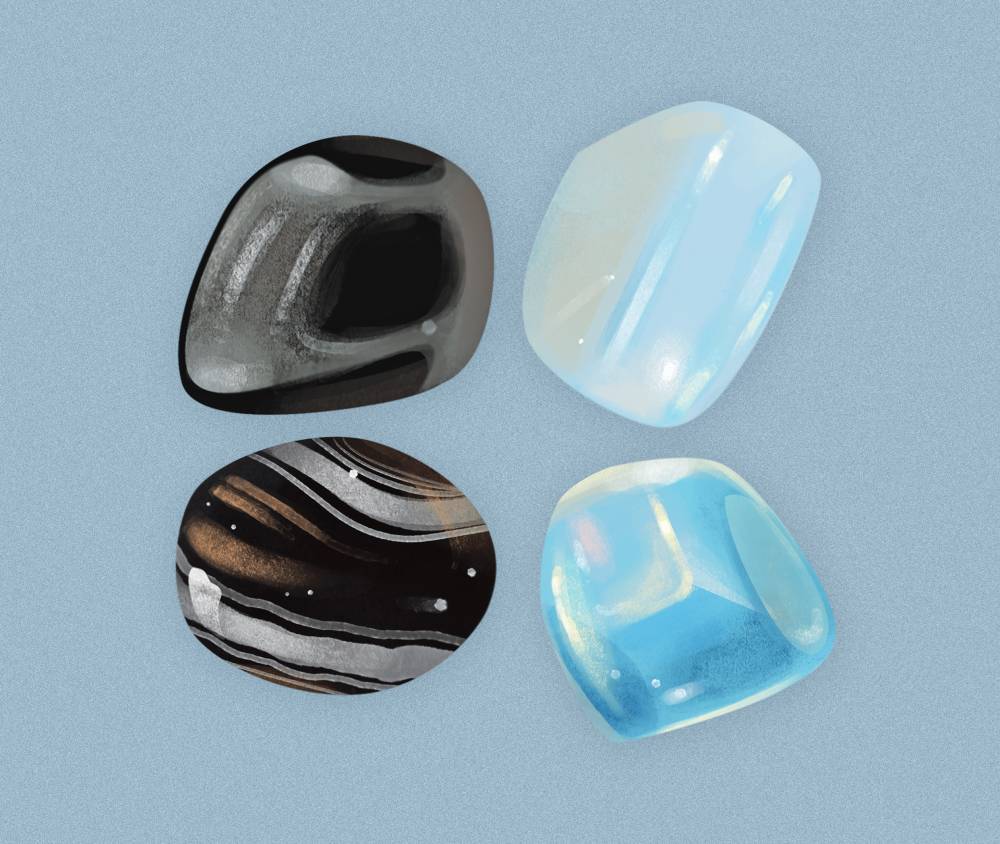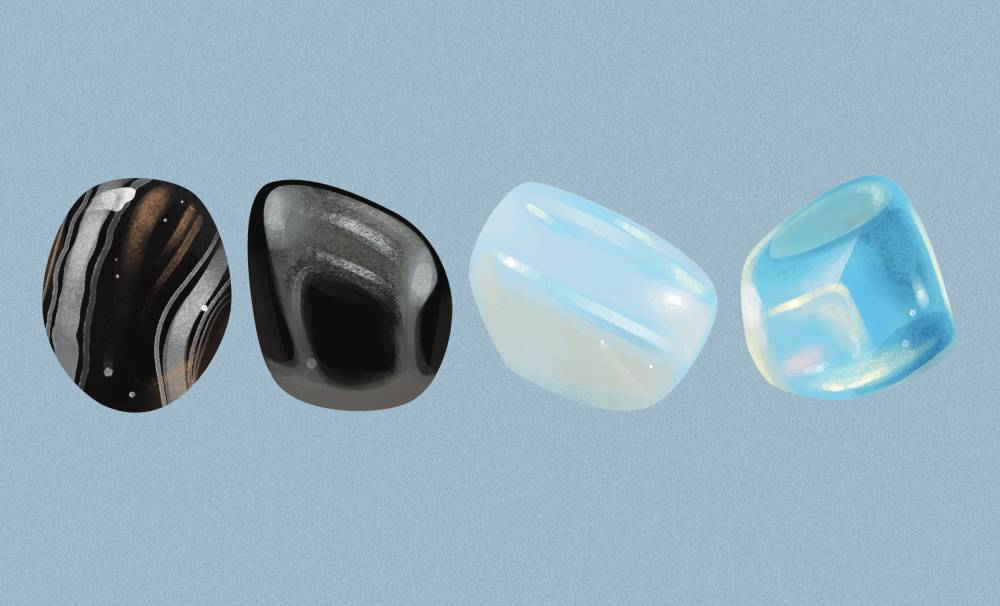What is opalite, and why is Taylor Swift singing about it?

“But my mama told me, ‘It’s alright / You were dancing through the lightning strikes / Sleepless in the onyx night / But now, the sky is opalite, oh-oh, oh, oh, oh. Oh, my Lord / Never made no one like you before / You had to make your own sunshine / But now, the sky is opalite, oh-oh, oh, oh, oh, oh.’”
Or so goes the chorus of Taylor Swift’s newest feel-good bop, “Opalite.” Part of her newly released “The Life of a Showgirl” album, which hit shelves last Oct. 3, it marks a sparkling new era for the singer, with bubbly tunes and feel-good lyrics.
Now I may not be a Swiftie myself, but stones… stones I know. And the mention of opalite in both the title and lyrics had me thinking about why she chose this simple, unassuming rock—when many singers have sung about flashier and far more dazzling stones, like diamonds. Think “Lucy in the Sky with Diamonds” by The Beatles, “Diamonds are a Girl’s Best Friend” from the musical “Gentlemen Prefer Blondes” (made famous by Marilyn Monroe), “Diamonds are Forever” by Shirley Bassy from the “James Bond” film, “This Diamond Ring” by Gary Lewis and The Playboys, or even “Diamonds” by Rihanna. And there’s more where that came from.
Though it’s easy to see why many gravitate to the sparkly stone. Value-wise, a diamond is far more expensive than opalite, with the former going anywhere from thousands to millions of pesos per carat, while the latter sits at a modest hundreds of pesos to, at most, a few thousand pesos per piece. And in terms of rarity, diamond also trumps opalite, hands down.
But price and rarity aren’t everything. While diamonds have long been the symbol of status, power, permanence, and luxury—exclusivity, so to speak—opalite’s charm lies in its ethereal appearance, accessibility, and symbolism, which Swift is known for incorporating into her songs.
And that’s probably the point. Opalite feels more intimate than ostentatious, more about inner glow than outer flash.
Before getting into the hidden gems in the track song “Opalite” (which remains my top favorite in her current album discography), let’s first talk about what opalite even is, and why the global superstar decided to give it the spotlight. (Bonus: Let’s touch a bit on onyx, too—another rock that was mentioned a few times in the song)
The allure of opalite
Soft and milky, unassuming yet elegant. This is the understated allure of opalite. Where a diamond sparkles—brilliant and fiery—an opalite glows. Like moonlight diffused by fog, opalite doesn’t dazzle. It shimmers.
But opalite doesn’t naturally form in nature. It’s actually man-made glass, made to mimic the soft iridescence of natural opal or even the adularescent, bluish white glow of a moonstone. And while it can be used in many ways—as decorative stones, a base for carvings, in fashion accessories and jewelry—most people are drawn to it for its crystal properties. That’s because in metaphysical circles, it’s often associated with clarity, communication, and emotional healing.
“This stone is said to help us release negative energy and emotions, and to open up our hearts to love… [and] promote communication and understanding, making it an ideal stone for those who are seeking harmony in their lives,” spiritual researcher and author Denise Taylor explains. “By infusing our bodies and minds with the positive vibrations of this stone, we can begin to heal ourselves on all levels.”
Opalite vs. opal vs. moonstone
But beyond its spiritual properties, opalite is often mistaken for opal or moonstone—and dishonest (or simply unknowing) sellers may capitalize on that, passing off the synthetic glass for its natural counterpart. So what makes opalite, opal, and moonstone different from each other?
For one thing, opal and moonstone are natural stones, though that isn’t to say that synthetic opal doesn’t exist—there’s plenty of it in the market now (more on that later). Opalite, however, is different. It is entirely man-made or synthetic.
Opal is also considered an organic gem—formed by seasonal rains (usually in Australia) that soak deep into rocks, carrying dissolved silica (silicon and oxygen) downward. During dry spells, when the water evaporates, the solid deposits of silica are left behind, between cracks and layers of underground sedimentary rock. Those deposits are what is known as opal.
Opal is prized for its vivid flashes of rainbow color, a phenomenon known as play of color, which is caused by light that interacts across the microscopic silica spheres that form a grid-like pattern in an opal. But not all opals display this. The ones that don’t are called “common opal.” As for the synthetic ones? Their play of color is suspiciously even and consistent, even mirroring a hexagonal, honeycomb-like pattern up close.
Moonstone, on the other hand, comes from feldspar, one of the most abundant minerals in the Earth’s crust. The stone forms when two types of feldspar—orthoclase and albite—layer over each other as the mineral cools to form the gem. Those alternating layers are responsible for the phenomenon called adularescence, a soft, floating bluish to white sheen. Given its abundance, there’s currently no synthetic moonstone. But many imitations are misidentified or marketed as “moonstone,” including opalite.

Of hidden gems and meanings
Going back to opalite, which Swift references in both the title and lyrics of the song, it’s clear that the stone serves as a pivotal symbol—representing a transition from darkness to light, from struggle to clarity, from negativity to new beginnings.
Look at it this way: “Sleepless in the onyx night / But now, the sky is opalite.” Onyx, a black stone, comes from the chalcedony family. While its natural form includes white stripes alongside a black base, many treat onyx to make it a uniform, deep black shade. In crystal circles, onyx is associated with protection, strength, and grounding energy—even used to ward off negativity—which makes it perfect for weathering the proverbial “lightning strikes” Swift mentions. In contrast, opalite represents clarity and emotional renewal.
So when the lyrics shift from onyx to opalite, it’s a symbolic transition of healing, like dark clouds that give way to sunny skies. It’s timely, too, given Swift’s many ups and downs in both her career and off-screen life—from public heartbreaks to media scrutiny, her highly-publicized battle to reclaim ownership of her music, along with the creative rebirths that have defined each new era of her music.
It’s interesting as well to note that opalite, when placed against a dark background, appears to have a bluish white color. But when held against the light (or even set on a light background), it transforms into a milky white color with an orangy glow. And if you think about it, this mirrors the mint green (to some extent) and orange motif of Swift’s new album, too!
But above all else, opalite is a nod to her fiancé, Travis Kelce, whose birthday falls in October, where tourmaline and opal are the month’s two birthstones.
Why opalite, though, and not opal? “I had written down the word opalite because I learned that it’s actually a man-made opal, like opal can be man-made, just like diamonds, and so, Travis’ birthstone is opal,” Swift says in an interview with Capital Official Radio. “I’ve always fixated on that; I’ve always loved that stone. I thought it was kind of a cool metaphor that it’s a man-made opal, and happiness can be man-made, too. That’s kinda what the song is about, the juxtaposition of those two.”
In true Taylor Swift fashion, “Opalite” isn’t just a feel-good anthem—it’s a love song to Kelce, and it’s full of hidden gems that are unearthed the more you dig deep, literally.
And while opalite may be man-made, the emotion it conveys—of clarity, hope, new beginnings, and opening up to love—is unmistakably real.





















